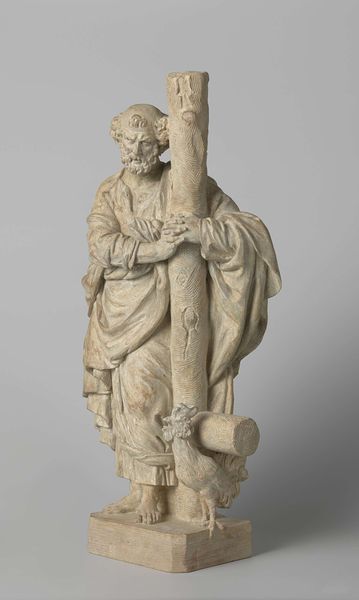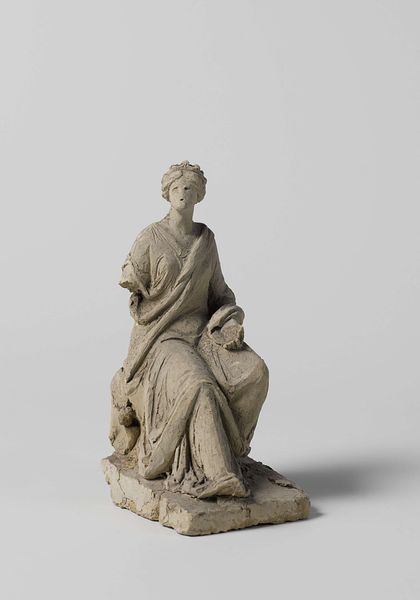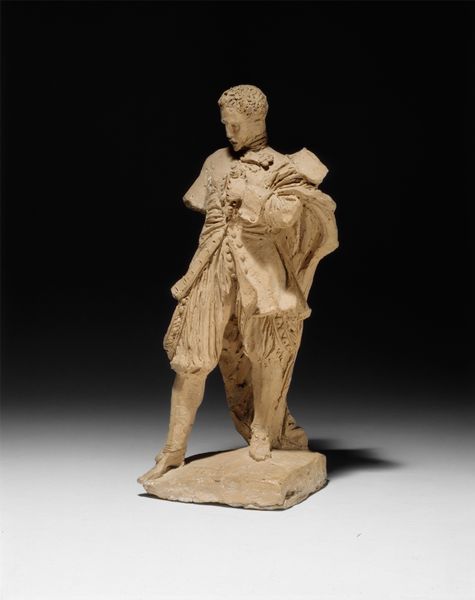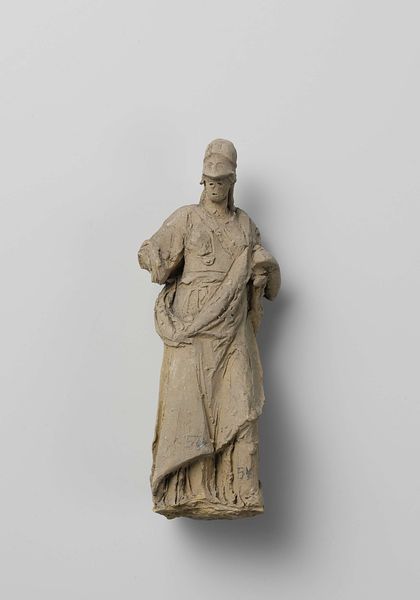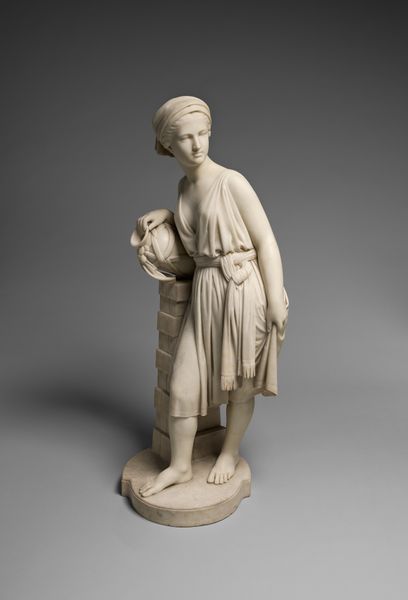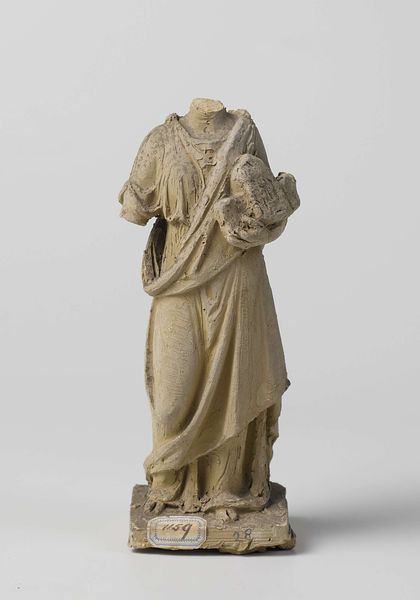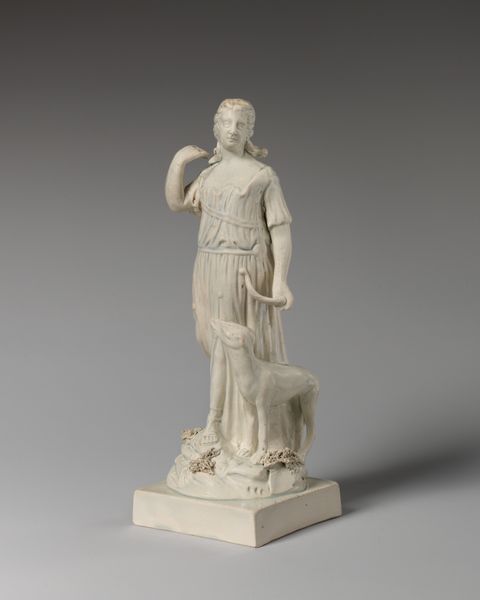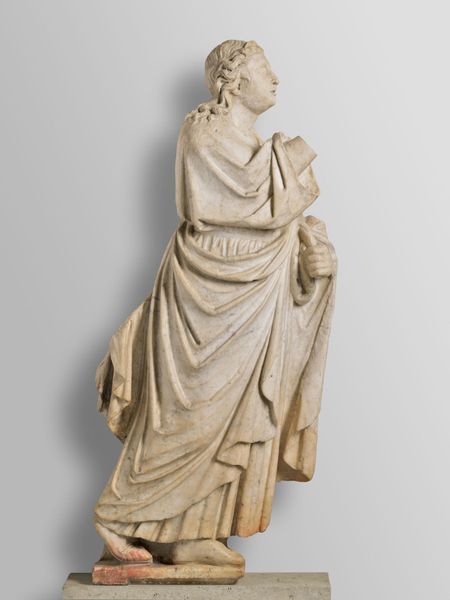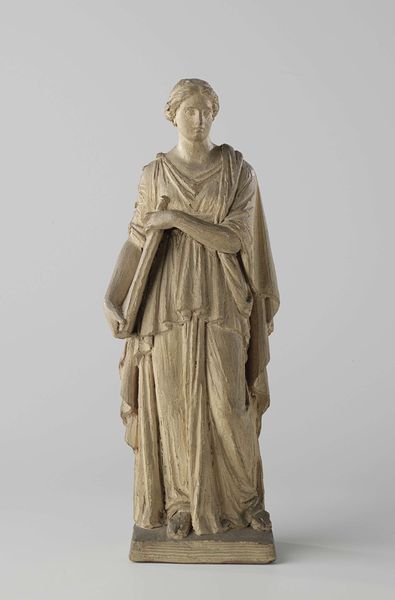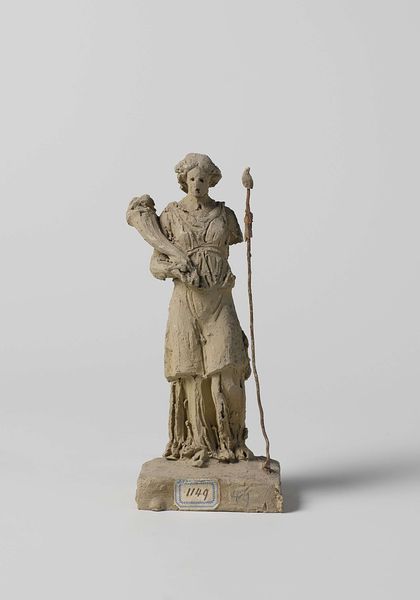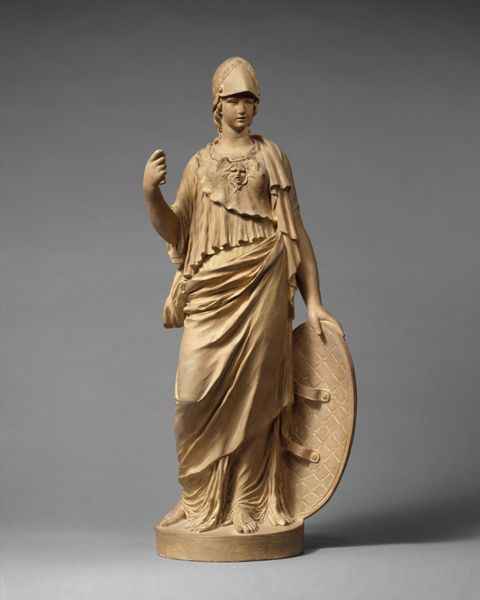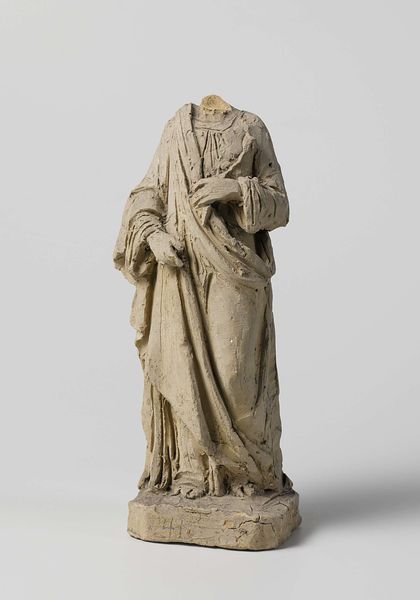
sculpture, marble
#
portrait
#
neoclacissism
#
sculpture
#
figuration
#
sculpture
#
academic-art
#
marble
#
statue
Dimensions: height 16 cm, width 8 cm, depth 8.5 cm
Copyright: Rijks Museum: Open Domain
Editor: This marble sculpture, "De Handel," believed to be from somewhere between 1800 and 1900 by Eugène Lacomblé, seems like a neoclassical depiction of commerce or trade, with the figure holding what appears to be a ruler or a tool. It evokes a rather academic mood. What stands out to you in this work? Curator: The compelling element here lies in considering the context of 19th-century trade. Who had access to marble, the means to commission a sculptor, and the economic structures that made this object possible? This wasn’t just about representing "commerce," but a reflection of very specific power dynamics. Editor: So, rather than the symbolism, you focus on the means of production and the societal factors at play? Curator: Precisely. Marble itself signifies luxury and authority. Who controlled the quarries, the shipping routes, the skilled labor involved in its creation? The sculpture’s academic style further reinforces established artistic hierarchies. The figure’s calm pose might belie the often exploitative nature of trade. Editor: It’s fascinating to think about it that way – less about the surface representation and more about the economic realities embedded within the object itself. Curator: And we should consider how the reception of this piece might shift depending on who's viewing it and what social context. The relationship between material culture and labor here reveals more than just a "portrait." Editor: I now see how the seemingly simple depiction carries a lot of embedded information on wealth, labor and materials of its time. Curator: Yes! Shifting our focus from the symbolic meaning towards production unveils power structures.
Comments
No comments
Be the first to comment and join the conversation on the ultimate creative platform.
